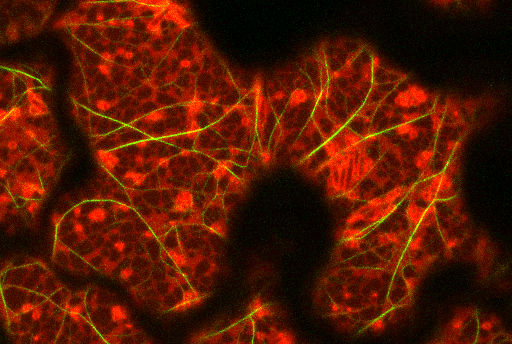Unraveling the Dance: How the Actin Cytoskeleton and ER Shape Plant Cell Dynamics
This study explores the intricate relationship between the actin cytoskeleton and the endoplasmic reticulum (ER) in plant cells, revealing how changes in one structure can directly impact the other. By manipulating actin markers and ER-shaping proteins, the research shows that disruptions in actin dynamics can alter ER remodeling and vice versa, highlighting a complex regulatory interaction between these two systems. The findings emphasize the importance of considering the effects of actin labeling on organelle structure and dynamics when studying plant cell biology.


The actin cytoskeleton and the endoplasmic reticulum (ER) are two essential components of plant cells that work in close coordination to support various cellular processes, including secretion, immunity, and signaling. Recent research has provided valuable insights into how modifications in the actin cytoskeleton can directly influence ER structure and dynamics, and vice versa.
The study found that common actin markers, such as FABD2, can significantly impact the structure and remodelling of the ER. High expression levels of FABD2 led to ER fragmentation and reduced remodelling, underscoring the importance of carefully controlling marker expression to avoid unintended structural changes. Additionally, over-expression of ER-shaping proteins like Lunapark and RTN1 affected the organization of the actin cytoskeleton, highlighting a bidirectional relationship between the two networks.
These findings point to a complex regulatory machinery that ensures coordination between the ER and actin cytoskeleton, essential for maintaining cellular function. The research also emphasizes the need for caution when selecting actin markers, as their influence can extend to other cellular structures, such as Golgi bodies. Ultimately, understanding the dynamic interactions between these two networks is crucial for unraveling plant cell biology and developing strategies for improving plant growth and stress resilience.
Research
Exploring plant cell biology through microscopy techniques.
Contact
cpain@brookes.ac.uk
© 2025. All rights reserved.
